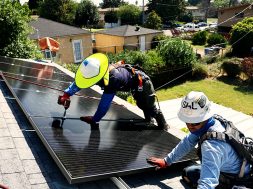
Crest to ask UT estate office to issue notices to violators
After city residents showed little interest in installing solar power plant atop their house, the Chandigarh Renewable Energy Science and Technology (Crest) has sought help from the UT estate office.
Last year, Crest had made installation of solar power plant on private buildings mandatory. However, despite that the response has been poor. It has been decided to request UT estate office to issue notices to the residents who have failed to comply with the directions.
There are around 2 lakh houses in Chandigarh, of which only 104 have installed solar power plants. The response has been cold despite Crest taking various initiatives. On a request by Crest, the Joint Electricity Regulatory Commission (JERC) enhanced cumulative capacity allowed at distribution transformer with an aim to encouraging people to install rooftop plants. The JERC enhanced the cumulative capacity to 50% of the distribution capacity of a transformer, which was earlier restricted to 30%. Last year, Crest also framed building bylaws, making installation of solar power plant on new private buildings mandatory.
With Chandigarh having an urbanisation of 97.25% and the second highest per capita income among all states and union territories at about Rs 2.42 lakh, the cold response from general public is baffling.
A solar power plant of 1kWp to up to 5kWp costs around Rs 85,000 while Rs 80,000 is the cost of a plant of more than 5kWp to up to 10KWp. To install a solar plant up to 20kWp, funds to the tune of Rs 75,000 are required.
Chandigarh has been selected by the central government to be developed as a “model solar city” and has set an ambitious target of generating 50MW of solar energy — both residential and government — by 2022. In the past three years, Crest has generated 20.36 million units (MU), equivalent to reduction of 1,410 metric tonne of CO2 and planting a total of 15.3 lakh trees. Of 20.36 MU, bulk of power has been produced by plants on government buildings.















